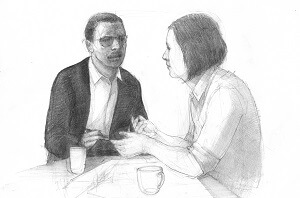Succession Planning and Mentoring Emerging Leaders: Personal Perspectives
In the 2018 State of the Nonprofit Sector Survey, 45% of the almost 3,400 nonprofit leaders responding said they plan to develop a succession plan in the coming year. At the same time, 36% cited identifying and cultivating next generation leaders as a top staffing challenge.
While it’s encouraging to see that more organizations are embracing the importance of succession planning, it’s also essential that we look to intentional knowledge-sharing activities like formal training, job shadowing, and mutual mentoring to help foster the new leaders the sector will need.
Staff leadership development really is part and parcel of a thoughtful succession planning process, as described here by one executive director in an excerpt from our primer The Succession Planning Lens:
“A couple years ago, I had the opportunity to work with an executive coach. She asked me a question that served as a turning point for me: “Are you going to continue to work at this organization until you retire?” I had not really thought about it in those terms, but had a vague idea that maybe when I was 55 or 60 I would make a transition. My coach advised me to “start to make the transition now,” while I still had the time and energy to make a well-planned transition for the organization and while I still had several working years left to start on my own career path.
She gave me various exercises and tools to help me clarify my personal decision, and I worked with her for about nine months before announcing it to my board and staff. During this time, I assessed the organization and whether it was in a good position for me to make my transition out. I brought more attention to building the leadership of others in the organization and attending to areas that I felt needed strengthening. Finally, was ready to announce my intention of transitioning, first to the board and then to the staff.
Once I made the announcement, we – the board, staff, and myself – worked with my coach in an open planning process to prepare for the transition. She facilitated sessions for the board and staff on the transition process and managing change while continuing to coach me as I guided the transition, from developing concrete timelines and plans, to attending to the emotions and feelings of staff and board.
I share this to help others along this path and also to urge us all to be more thoughtful and intentional about intergenerational leadership. One of the most compelling reasons for my decision was that as the years went by I felt that no matter how much I shared power and leadership, the trajectory of my continued presence was starting to overshadow new growth and leadership for others and the organization. Every leader and every organization is different, but I encourage you to think about leadership in your organization, and how best to build shared and sustainable leadership for the greater good of our organizations and their work.”
This need to be intentional about developing a next generation of leaders was echoed in recent conversations I had with two of our own staff about their experience mentoring young leaders — a role they both have played while executive directors as well as in their current careers as consultants.
One said:
“I have always had mentoring relationships with younger staff. Even those I no longer work with, we still have ongoing conversations about their career goals. With current supervisees, I think about their potential (and desire) to be in an organizational leadership role someday and what they need to learn and how they need to develop to be ready for it. It’s also important to create a safe space for them to develop their own style and voice, and for testing, making mistakes, and learning. It’s something I’ve always thought about: How do you “bring up” staff – give them chances to learn and lead?”
Another spoke to the mutual benefit of mentoring, acknowledging not only what it offers young leaders but the meaning it confers for the mentor, as they continue to pursue their own life paths.
“Throughout my own career, I actively sought out mentors – sometimes within the organization I was working for, sometimes outside of it. And I often maintained those relationships even after moving on to another position. Today, there are several individuals I’m involved in mentoring. These relationships are an important aspect of how we pass on knowledge, both the pragmatic and nuanced – the art, not just the science, of the work. Making introductions to others is another way I try to be valuable to those I’m mentoring. Even when I do retire (or semi-retire), I plan to pass along my experience as a volunteer – so in an entirely different role and setting. I know I have a lot to offer, and I look forward to that opportunity.”
This is also a good reminder that it’s not just technical, tactical, or strategic knowledge that’s ripe to be shared with others, but also key relationships (so that they become organizational relationships rather than just being held by the CEO) and hard-won wisdom. For more thoughts about how organizations can make sharing wisdom across generations a more routine part of how they do business, check out this HBR article, Four Ways to Help Different Generations Share Wisdom at Work.
Happy sharing and learning!


Comment section